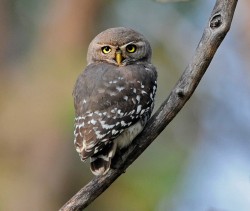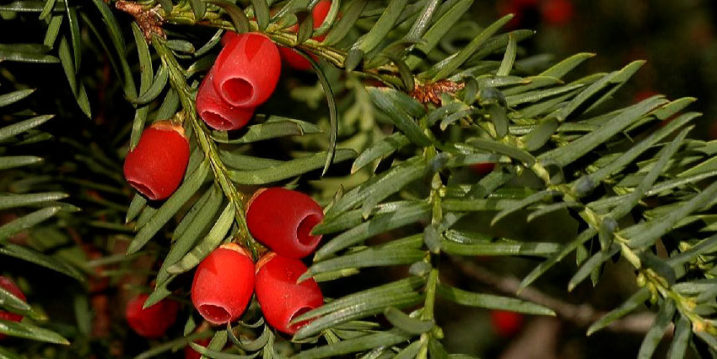|

www.indiasendangered.com |
|

FOREST OWLET (Heteroglaux blewitti)
|
- Critically Endangered (CR) on the IUCN Red List
- Protected under Schedule I of the
Wildlife (Protection) Act 1972, India.
- Included on Appendix I of the Convention on International Trade in Endangered Species (CITES),
making international trade in this species illegal
|
| HABITAT |
Dry, deciduous teak forests of India. Previously also found in moist deciduous teak forests. |
| RANGE |
The forest owlet is endemic to the Narmada River Valley region in central India but recently (October,2014) also discovered in Western Ghats region of Maharashtra. |
| PHYSICAL FEATURES |
- Length – 23 cm, female usually larger than male
- Square-head, striking yellow eyes
- Dark grey-brown plumage with faint marking on crown, distinguishing it from the commonly found spotted owlet that has visible white-grey spots on crown
- Wings and tail are heavily banded
- Disproportionately large talons which are put to use in catching prey up to two times its own size
|
| FAST FACTS |
- One of the rarest and least-known of India’s endemic bird species
- Was believed to be extinct for over 100 years until its rediscovery in 1997. Seen again in October 2014
- Feeds on lizards, small rodents, frogs and nestling of other birds. Likes to store extra food inside tree hollows
- Two eggs are laid by the female inside tree hollows. It is extremely cautious about the male interacting with chicks as the male forest owlet has been reported to hunt and eat its own chicks
- Tail-flicking, head bobbing and hooting is common
|
| POPULATION |
Approximately 100-250 present in the wild. Melghat Tiger Reserve remains the sturdiest sanctuary, providing the perfect environment for roughly 100 of these birds |
| THREATS |
- Forest habitat fragmentation
- Deforestation
- Killing due to local superstitions that regard the birds as ill omen
|
| Image courtesy – http://indiasbirds.files.wordpress.com/2013/12/forest-owlet-athene-blewitti.jpg |







Suggesting addition of references available regarding reporting of the species in the Endangered Species Directory.
Sure Sunil. We will add reference with the reporting of the species too. Thank you for your suggestion.